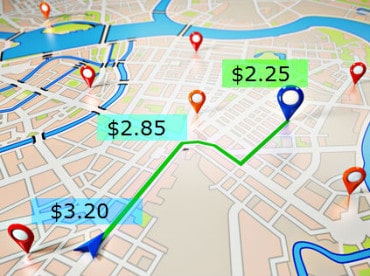
In the news this week: TIBCO makes a major acquisition, telco and IT powerhouses partner on edge applications, and graph analytics has a big week.
Keeping pace with news and developments in the real-time analytics market can be a daunting task. We want to help by providing a summary of some of the items our staff came across each week. Here is a short list of some news from this week:
TIBCO Software Inc. announced that it has entered into an agreement to acquire Information Builders, Inc. (ibi). Its comprehensive set of data management and analytics capabilities will augment TIBCO’s Connected Intelligence platform to more deeply address customers’ end-to-end needs. Additionally, ibi’s data quality, preparation, and integration products will support the TIBCO Any Data Hub and Responsive Application Mesh strategies. Also, TIBCO’s Hyperconverged Analytics strategy will be enriched with the infusion of ibi’s analytics solution, WebFOCUS.
AT&T and Cisco have extended their collaboration to manage Internet of Things (IoT) devices for enterprises. AT&T Control Center powered by Cisco gives businesses near real-time visibility of all the devices on their network and enhances their ability to gather and use device data to drive business outcomes. For more than a decade, the companies have worked together to manage services for U.S. enterprises and support through the AT&T Global SIM for international roaming that provides IoT connectivity in more than 200 countries and territories. Additionally, AT&T and Cisco are working together to bring new solutions in Low Power Wide Area Networking and 5G. They aim to make it easier for customers to manage IoT connectivity through advanced Control Center features that help mitigate security risks, identify anomalies in data usage as well as optimize traffic classification reporting to enhance billing clarity.
Verizon teamed with Microsoft to develop new ways for enterprises to develop fast and secure 5G applications. The collaboration brings Azure cloud and edge capabilities together with Verizon’s on-site 5G Edge, a mobile edge computing platform designed to enable developers to build applications for mobile end-users and wireless edge devices with ultra-low latency. By providing on-site private 5G, businesses will realize increased power efficiencies and reduced costs of end-user devices while helping to address their privacy and security needs.
TigerGraph announced the results of the first comprehensive graph data management benchmark study using nearly 5TB of raw data on a cluster of machines – and the performance numbers prove graph can scale with real data, in real-time. The company used the Linked Data Benchmark Council Social Network Benchmark (LDBC SNB), recognized as the reference standard for evaluating graph technology performance with intensive analytical and transactional workloads. TigerGraph is the industry’s first vendor to report LDBC benchmark results at this scale. TigerGraph can run deep-link OLAP queries on a graph of almost nine billion vertices (entities) and more than 60 billion edges (relationships), returning results in under a minute.
Intel and Katana Graph announced a collaboration to port and optimize the Katana Graph engine on Intel Xeon Scalable processors, Xeon-based clusters, and the upcoming line of Intel’s discrete GPUs, including the GPU (code-named “Ponte Vecchio”). Together, Intel and Katana Graph will help businesses exploit high-performance, scale-out parallel computing to solve large-scale problems with unstructured data with unmatched efficiency. Intel’s broad ecosystem of technologies enables customers to accelerate analytics at every stage of the data pipeline. The Katana Graph engine supports scale-up and scale-out analytics that can run on large clusters of x86 CPUs, large memory systems with Intel Optane persistent memory, single or multi-node GPU platforms, or any combination of these technologies. Additionally, it can scale to hundreds of machines in production clusters.
Neo4j announced the latest version of Neo4j for Graph Data Science, which uses advanced graph-based machine learning (ML) techniques by leveraging deep learning and graph convolutional neural networks. Neo4j for Graph Data Science version 1.4 includes graph embedding algorithms that learn the structure of a user’s graph, rather than relying on predetermined formulas to calculate specific features like centrality scores. This makes it possible for anyone to use graph machine learning.
SAP announced the expansion of its industry cloud solutions portfolio to serve the needs of three new industries: retail, professional services, and industrial machinery and components (IM&C). SAP’s industry cloud portfolio delivers specialized applications designed to address specific industry needs. Industry cloud solutions are built and run on the open SAP® Cloud Platform. They use intelligent technologies such as artificial intelligence and advanced analytics to create compelling user experiences and to digitalize and automate operations. SAP and partners focus on solutions for the core business of our customers in their industries to help optimize end-to-end processes and to enable the development of new and differentiating business models.
Qlik acquired Blendr.io, an easy-to-use, scalable, and secure embedded integration and automation platform (iPaaS), that seamlessly automates data integration and orchestration of processes across 500+ SaaS applications and cloud data sources. Purpose-built for embedded SaaS use cases and enterprise integration workflows, Blendr.io expands Qlik’s ability to deliver Active Intelligence through its end-to-end data integration and cloud analytics platform, where real-time, up-to-date data triggers immediate action to accelerate business value across the entire data and analytics supply chain. Blendr.io will also help expand the Qlik ecosystem use cases across ISVs, SaaS providers, and enterprises.
Alluxio announced the availability of the next major release of its Data Orchestration platform featuring an expanded metadata service, a new management console for hybrid and multi-cloud deployments, and more cloud-native deployments. Data platform teams can now save on infrastructure and operational costs while easily managing data access across multiple environments. The new management console will make it easy to connect an analytics cluster, with engines such as Presto and Spark, with data sources across multiple clouds, single cloud, or on-premises using Alluxio. Alluxio 2.4 Community and Enterprise Edition features new capabilities, including expanded metadata service, cloud-native deployment, sensitive data management, support for Java 11, and simplified DevOps and system monitoring.
Pindrop announced the launch of Pindrop Trace, a new patent-pending analytics engine based on graph analytics. This new technology powers account risk scoring on the Pindrop Protect platform to identify the most complicated fraud scams and predict cross-channel fraud up to 60 days before the fraud takes place. Using graph analytics, it processes a comprehensive set of data inputs, including detailed call and historical information, existing patented Pindrop risk engines, the extensive Pindrop Consortium, and other enterprise data, including digital and mobile data that can connect into the platform. Pindrop Trace connects all data sources to provide a comprehensive view of potentially fraudulent activity across all touchpoints, enabling businesses to prevent more fraud and reduce fraud losses.
Canonical released Ubuntu 20.10 with optimized Raspberry Pi images for desktop and server. The Raspberry Pi 2, 3, and 4 join a very long list of x86 and ARM devices certified with Ubuntu. Dell, HP, and Lenovo all certify PCs with Ubuntu Desktop, which is also the most widely used OS on the AWS, Microsoft Azure, Google, IBM, and Oracle clouds. Ubuntu 20.10 includes LXD 4.6 and MicroK8s 1.19 for resilient micro clouds, small clusters of servers providing VMs, and Kubernetes on demand at the edge, for remote office, branch office, warehouse, and distribution-oriented infrastructure. Specifically, Canonical introduced its micro cloud stack that combines MAAS, LXD, MicroK8s, and Ceph on Ubuntu, to deliver resilient pocket clouds hardened for mission-critical workloads in 5G RANs, industry 4.0 factories, V2X infrastructures, smart cities, and health care facilities.
Infragistics announced the release of Ignite UI for Blazor. The latest collaboration between Infragistics and Microsoft marks the expansion of Infragistics’ UX/UI product portfolio. Now, Infragistics’ enterprise UI toolkit is available to more than 5 Million .NET developers who can build interactive web applications without JavaScript, using Microsoft’s Blazor. The new open-source framework gives enterprise developers an option for developing full-stack web applications using .NET and C# instead of JavaScript. Infragistics’ Ignite UIis one of the most complete libraries of enterprise-grade web UI components on the market and provides Blazor users with the developer-ready components they need to build fully-featured production web apps.
Next Pathway Inc. announced a self-service version of its SHIFT™ Migration Suite. Putting SHIFT directly in the hands of customers will ultimately make it faster, easier, and cheaper for enterprises to jumpstart cloud migration projects — including planning, code migration, and cutover — with just a few clicks. SHIFT automatically migrates code from the most common legacy sources, including; Apache Hadoop, Teradata, Netezza, Greenplum, and SQL Server; and ETL (Extract, Transform, Load) tools like Informatica and DataStage, to a variety of prominent cloud targets, including Snowflake, AWS Redshift, Azure Synapse, Google BigQuery, and Yellowbrick.
YottaDB announced production-grade Octo 1.0, a YottaDB plugin to query YottaDB application data using popular SQL tools. YottaDB excels for transactional systems, where data integrity and application robustness are paramount – applications that effect database state change to provide mission-critical functionality, such as electronic health record systems, core banking systems, library systems, and election systems. YottaDB is language-agnostic and offers concurrent native data access using C, Go, M, Perl, and Rust today, with node.js, Python, and other languages on the roadmap. All common NoSQL use cases map to YottaDB’s hierarchical key-value data model. While YottaDB scales up to the largest transactional systems, its light footprint and parsimonious use of system resources allows it to fit in resource-constrained applications like edge computing.
If your company has real-time analytics news, send your announcements to ssalamone@rtinsights.com.
In case you missed it, here are our most recent previous weekly real-time analytics news roundups:





























